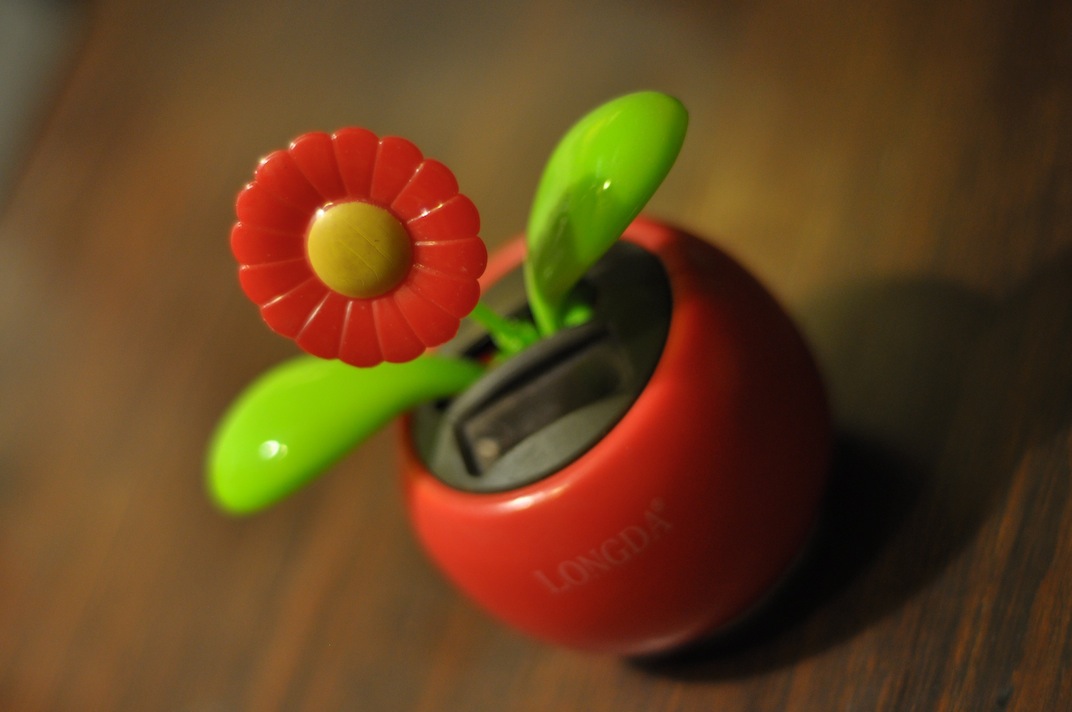Take a look at this toy. Depending on where you stand on the aesthetic spectrum you may find it rather tacky, but there’s also something very endearing about it. It is sold on pavements and at traffic lights in metros across India, the latest in a line of quirky street-side toy fads that have in the past included items such as a birdcage shaped head tickler. People have been sufficiently entranced by its charms to make this little flowerpot a mass-produced phenomeon. In Delhi and Bombay it’s ubiquitous – I’ve seen it on office desks, window sills, toilet water tanks, and car dashboards are starting to look incomplete without one.
It grabs your attention with its garishly bright colors and shiny plastic, making no pretenses of looking ‘natural’. But it moves in a surprisingly organic fashion. The leaves sway to and fro, with the flower nodding along in cheery unison. It sways in the breeze, but even if the air is completely still it keeps rocking to its own solar-powered beat.
The American physicist Richard Feynman was once interviewed on BBC’s science program Horizon, where he made a case for science on aesthetic grounds. He was responding to a certain criticism of science – that it misses out on some essential aspect of our human experience by reducing the world to mechanics. Feynman retorted that when we consider a flower, our appreciation of its beauty may be informed by our aesthetic experiences, but the beauty is basically accessible to all of us who can perceive it. However, by asking more pointed questions about the flower – what is it for? how does it work? what was the world like before flowers? – we can gain a deeper appreciation. An understanding of science only adds to our appreciation of beauty, it does not detract.

